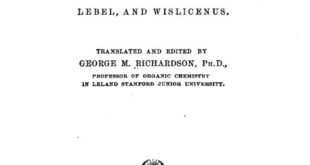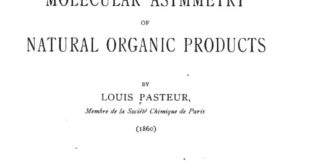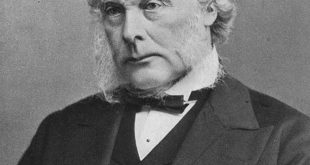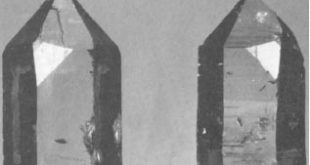Translated by Pierre Beaudry
Pasteur, Louis. Correspondance : 1840-1895 / de Pasteur. Tome III / réunie
Open letter to Robert Koch, December 25, 1882.
Sir,
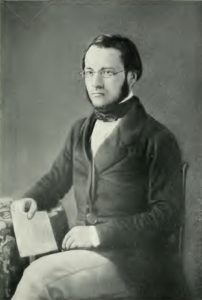
In 1881, you have attacked my works too quickly and without due consideration, in your first volume of the German Imperial Health Office published, in Geneva on September 5, 1882, and, meanwhile, I have refuted your errors. It is too bad that you have since then refused to discuss this matter publicly. Though we can no longer debate the question face to face and before a competent jury, I nonetheless accept to do it in writing.
You maintained that I had brought nothing that was scientifically new to the Geneva Congress. Really, sir! A general method of reducing viruses by their simple exposure to the action of oxygen in the air, the knowledge of new microbes, the research on the condition of their reduction, variable according to their respective properties, none of that appears to be new to you! It is true that, in the German reference book that I was consulting, a moment ago, you made believe that the reduction of viruses was a fiction, the result of some adulteration of my cultures or of the deposit of a foreign germ on the vaccination needle.
Regardless of the fact that I am used to all sorts of contradictions, I was taken aback in reading in your brochure that:
“when I evaluate a sickness, I do not look for microbes, that I am not concerned about where they are, and that I leave aside, in each particular case, the demonstration of their parasite character.”
I really had to have these lines before my eyes to persuade myself that they had been written.
“It is in that manner,” you assert with confidence, “that Pasteur omits to say if, in the disease identified by him as a new rabies disease, he has explored the organs of the child who died from the rage and which gave him a starting point for inoculation, and above all, if he has made a microscopic evaluation of the sublingual glands for that specific microbe.”
I find in this a new example of your discussion procedure that you had already used in 1881; that is, you ascribe to me errors that I have not committed, then, you denounce them and make a lot of noise with your triumph. Where have you read in my writings that I speak of “a new rage disease”? No doubt from some second hand report.
You come back, sir, on the experiment of the anthrax inoculation of chickens because of the single fact of the coldness of the subjects. In fact, this experiment requires all of your attention because, up to now, it has been evaluated as one of the most remarkable experiments of physiology. In 1881, in the book of the German Office of Sanitation you had expressed doubt as to its exactitude. With more reservation today, you have accepted it as truthful. I appreciate this new change of opinion. However, you have not accepted the interpretation I have given of their results. You disagree with the means of maintaining the chicken wings and to fix them on a board by concluding, what is not very logical, that what might happen to certain birds would also develop in the chickens themselves, and finally, you also pretend that, under normal conditions, the chickens catch anthrax in the proportion of 33 percent. This may be because German chickens are more accommodating than French chickens.
As for me, I never could give anthrax to chickens without cooling them first, whether they are fixed on boards or not. Since cold chickens catch the anthrax and since, from the moment they are already infected by the bacillus anthracis, it is enough to warm them up in order to see the disappearance of the bacillus, and see the chickens regain slowly their health at the same time, I consider that those are sufficient proofs to conclude in favor of a simple effect of temperature. It would also be desirable that all of the physiological facts were to be based on such solid basis. Moreover, it would be more than desirable if you could support your own interpretation with such a solid experimental buttress. But you are satisfied with a purely fanciful interpretation when you declare that you consider useless the adoption of fact control measures. The history of ancient and recent studies relative to anthrax infection, its etiology, the application of new vaccination for animals, all these questions which appear to be interesting you more particularly, will even put more light on the weaknesses of your polemic.
Your first work is on the subject of anthrax or Mitzbrand. It was published as you said yourself, in 1876. Here is what I said about it, on April 3, 1877, before the Academy of Sciences: “In a remarkable memoir, Dr. Koch noticed that the little string-like bodies discovered by M. Davaine can be changed into a state of brilliant corpuscles, after having been reproduced by splitting, and then reabsorbed themselves…” and below, I added: “One must think that these corpuscles can survive from one year to the next without dying, and be ready to propagate the disease; it is the opinion of Dr. Koch. “You see, Sir, that I was one of the first to recognize the merit of your work on the spoors of bacillus anthracis and of the usefulness of the knowledge of these spoors for the etiology of anthrax. However, if you take the time to consult the first volume of my studies on the disease of the silk worm, you will see on pages 168, 228, and 256, that the priority for the discovery of the formation of spoors inside of a pathogenic bacillus belongs to me, that I have described and figured out this bacillus, that I have indicated the formation of spoors as well as the resolution of the surrounding matter of filaments, that I have finally demonstrated that those spoors or ganglions could be regenerated several years after their [original] formation.
Why did you hide all of this to the readers of your first memoir? Are you going to say that you have ignored the existence of my work on the diseases of the silk worm, which was published in 1869-70? Your assertion would be insignificant because, in matters of science, no one is permitted to ignore a discovery, and moreover, how many opportunities did you not have, since 1877, to come back on these facts! You have remained obstinately silent so as not to have to recognize that your own study on the anthrax bacillus, had to be considered, despite its own merit, as being a new application of previous principles that I had established. In one word, sir, it is not you who has made the discovery of the mode of generation of the bacilli, and the vibrio spoors; it is not you who has brought attention to their curious mode of formation; it is not you who has recognized their preservation in dust form and the long duration of their vitality. The precision with which I have described the formation of these ganglia, corpuscular-germs, and spoors, is such that you could have resorted simply to making a copy of the figure which illustrates this on page 228 of my work in order to introduce it in your memoir of 1876, and make use of it to illustrate what you have said about the bacillus anthracis…
The opinion whereby the spoors of the anthrax bacillus can propagate the anthrax disease from one year to the next, as well as the spoors of the bacillus of the (flacherie?) of the silkworms can produce this disease the following years, would that be sufficient to give us the complete and true etiology of anthrax? Nobody would dare say that. The knowledge of that etiology dates only from the discovery of the role of earthworms. This is what you needed to be reminded of, sir. It is true that this discovery of the role of earthworms, according to you, is not worth paying any attention and, in the book on German Sanitary Office, you laugh at the thought that it could have attracted the attention of your compatriots. You are wrong, sir, you are setting yourself up for another foiled expectation in which you will be forced to change your opinion. In the same fashion, today, after having rejected the great fact of the attenuation of viruses, you have been forced to accept it and to praise it. You will end up doing the same with the role of earthworms. This retrospective summary that you are forcing me to go through is not over.
I ask forgiveness to the reader for going through a historical survey in which my own personal studies take a lot of room, but you, sir, appear to be ignoring or you have misunderstood the evolution of the facts. There is in your booklet a ton of passages in which “the impertinence of error,” as Pascal used to say, is truly too great. Since the most ancient times, all men, and particularly those who endeavored in the practice of medicine, have brought closer together two natural phenomena of capital importance: illness or fever and fermentation. Wheat dough, or must of grapes which, spontaneously, rise and get heated up, reminds any observing mind this motion of pulse acceleration which is accompanied with an elevation of temperature and which changes all of the humors of the body.
At different times during the history of sciences and whatever obscurity may have covered the knowledge of these great phenomena, man had a tendency to believe that the mystery that envelops them was of the same nature. This is what the famous professor Tyndall once expressed in one of his brilliant lectures at the Royal Institute of London, by quoting these profound words of the physician Boyle: “He who will be able to probe to its very foundation the nature of ferments and of fermentations will become, without a doubt, much more able than any other to give a just explanation of the diverse morbid phenomena – such as fevers as well as other affections – which may never be properly understood without a deeper knowledge of the theory of fermentation.” In every historical period, therefore, we witness the appearance of medical theories, and more particularly those concerning the etiology of contagious diseases, which defend imaginary explanations in order to explain away the phenomenon of fermentation.
When I undertook my first studies, in 1856, the doctrine of Liebig was the most popular. Ferments, Liebig said, are all of those nitrogenous matters, albumin, fibrin, casein…, or other organic liquids which contain them such as milk, blood, urine, in a state of alteration that affects them when they come in contact with the air. In turn, these can communicate this movement of alteration to fermentable matters that get resolved into new products. Under the pressure of ideas that are passionately and well defended by the knowledgeable chemist on the subject of the nature of ferments, viruses and the processes of diseases were also considered as results of intestinal movements of substances in a process of alteration, capable of communication itself to the diverse matters of the living being. Spontaneity was invoked in the origin and during the course of the diseases, similar to those of fermentations. During a period of twenty years, all of the studies that I communicated to the academy of sciences were aimed at demonstrating, directly or indirectly, the inexactitude of Liebig’s opinions.
First of all I showed that in fermentation as such, there was to be found, in a necessary manner, special microbes and that in those places where only dead matters were thought to exist, life manifested itself in the process of alteration, as a correlative to fermentation. On the other hand, I produced fermentable milieus in which there were only three types of substances: the matter capable of fermentation, mineral salts, and thirdly, the germs of the microbe-ferment. Correlative to the multiplication of the last substance, fermentation to place and reached its end. All albuminoidal substance being set aside at the start of the fermentation, the doctrine of Liebig fell apart and the phenomena of fermentation presented themselves as simple chemical actions of decomposition in relationship with nutrition and the development of microbes which borrowed from the surrounding substances, minerals and fermentibles, the elements of their own tissues.
Grant me, sir, this short digression. When I go back like I am doing right now, to the studies that had occupied my time from 1856 to 1876, a long span of lifetime during which you were not born to science, since your first work dates from 1876, and when my unique preoccupation was to isolate and to make microbes live in a pure state within appropriate milieus, is it not funny that you have the frivolity of accusing me of not being able to make pure cultures! You have therefore not read, sir, among other things in the reports of the academy of sciences, this sort of challenge that I have made, in 1871, to your eminent compatriot Liebig, on the subject of the great inexactitude of his theory on
fermentation.
You have therefore not read that, if he had accepted to submit the debate to a commission to which I had left him the liberty of choosing his own members, I was then ready to display before its judgment complete fermentations with very elevated weights in pure sugar candy, with the help of a yeast formed and nourished solely in a sweet mineral milieu, a circumstance requiring in the most absolute manner that the yeast had grown in a state of irreproachable purity, in contact with pure air? But why am I attending to your puerile assertions on the point that I am speaking of? I pass and I resume my story. Very rapidly, human medicine and veterinarian medicine seized upon the light that I was bringing to them with the results of my research. People immediately began to search if viruses and infections were not microscopic living beings…
In England, as early as 1865, doctor Lister began a brilliant series of his successes in surgery by the application of his antiseptic method, today, universally adopted. The letter that he wrote me in February of 1874 and which had given such honor to his sincerity and his modesty is the living testimony of the opinion that I have of him at this time. I take the liberty of reproducing a few lines here: “I like to believe that you will be able to read with some interest…etc.” In 1864 and in 1865, I was demonstrating that all of the diseases of wines and of fermented drinks in general were produced by microbes that temperatures much lower than (..) could easily destroy, which permits the ulterior conservation of these drinks. Finally, I was starting my studies on the diseases of silkworms, diseases that I also demonstrated were the consequence of the action from several microscopic beings. The entire preceding statement, sir, might help you to understand that, if I am neither a doctor nor a veterinarian, as you like to remind it, there is agreement nonetheless, in England as in France, in recognizing the great part of initiative that I have taken in the current etiological doctrines.
You, sir, who have entered the domain of science only in 1876, after the great names that I have just quoted, you are able to admit without flinching, that you are a user of French science… However, if you praise today the value of the discovery of reduction of viruses in a scientific report and you hasten to condemn it in practice…what kind of bias is that, sir? And, what sort of inexactitudes are you promoting in your presentation? If, in the experiments of Packisch, the great majority of vaccinated sheep resist to the virulent virus – 22 out of 22 in the first series, and 24 out of 25 in the second – you assert that the virus that I have sent must have been already weak. However, not only had this virus killed all of the sheep samples, which is a proof of its virulence, but it is also expressly stated in the report of the Berlin Commission that, contrary to your own assertion, the commission used in the two series of tests, the blood from the cadavers of sheep that had died from the anthrax… It is really inconceivable that the practice of preventive vaccination should be assailed in the name of all of the experiments that I have just borrowed from your exposition, experiments which are as defective in their principles as they are in their conclusions.
Has it ever occurred, sir, that I have recommended the vaccination of rabbits or of Guinea pigs with vaccines prepared for sheep or for bulls? Moreover, you are strangely mistaken when you assert that these species of little animals cannot be vaccinated against virulent anthrax. The thing is easy and, again very recently, Dr. Feltz has succeeded very easily, as anyone can read it in the report from the Academy of Sciences. You have not succeeded in your experiments, that is all there is to it. I would be tempted, if you had taken a different attitude in this discussion, to send to your attention in Berlin a number of vaccinated Guinea-pigs and rabbits that you would be incapable of killing with the anthrax infection, just to show you, empirically, the mistake that you are making in always considering impossible a thing that, because of insufficient experimentation, you have been incapable of producing.
You have attached a great importance, sir, to the experiments that you have made by giving meals that you have infected with bacterial spoors mixed in the food of vaccinated or non-vaccinated sheep. You attempt to conclude from such results that: the natural anthrax infection of sheep is more dangerous that the anthrax developed by way of inoculation. How can you sustain such a heresy? First of all, you should have recalled, sir, that the experiments that you relate are imitations of those that I had done in 1878, with the collaboration of M. Chamberland, in the fields of the Saint-Germain farm, near Chartres; it was with meals contaminated with anthrax spoors that we had caused the
disease and the death; but the proportion of mortality had only been of (..), while it is of (..) by direct inoculation. You should also have warned your reader that we had augmented the number of mortality when pricking objects, like shavings of cut barley, were added to the spoors in the food. I totally agree that only the spoors, even without pricking things, could introduce the anthrax and communicate it by the mucous membrane of the intestine as well as the mucous of the mouth and of the throat; but how can you reasonably conclude from your experiments that, in the fields, the conditions of contagion are more dangerous than those by the anthrax inoculated directly?
How can you not see that it is impossible to compare the number of spoors that animals can ingest through feeding in the fields or in the stables? How can you not see that the question of knowing if one can kill sheep that are vaccinated by infected meals has nothing to do with and is completely independent of the judgment that must be made on the practice of vaccination? How can you not understand, finally, that it is useless to ask that vaccination do a great miracle? Is it not enough of a great feat that the one which consists in immunizing with vaccination, by showing that a very large majority and sometimes the totality of vaccinated animals, resist under a virulent inoculation! Would you dare do the same thing with the Jenner vaccine? Would you dare, after vaccinating one hundred children, inoculate them with the virus of the black smallpox? A great number would no doubt die of smallpox, and yet, would you throw out the Jenner vaccine like some people are proposing stupidly?
Well, this terrible test is the one that we have succeeded with the new vaccination at Pouilly-Le-Fort, at Packisch, at Kapuvar, and many other places. In summation, sir, leaving aside the obvious inexactitudes of your citations and your judgments, I estimate that only one thing is to be remembered from your brochure: it is that you have been constrained to celebrate, after you have failed to recognize it, the discovery of the reduction of viruses. Only time will be the judge of the benefits that this method can bring to agriculture in all countries. As of now, the results of a first year of application are considerable enough that the critics and the contradictions have not been able to stop the progression of its development. As violent as your attacks might have been, sir, they will not prevent its success. I also await with confidence the results that this method of reduction of viruses holds in reserve to help humanity in its fight against the diseases that lay siege to it.
Signed, Louis Pasteur.
 Pasteur Brewing Louis Pasteur – Science, Health, and Brewing
Pasteur Brewing Louis Pasteur – Science, Health, and Brewing 